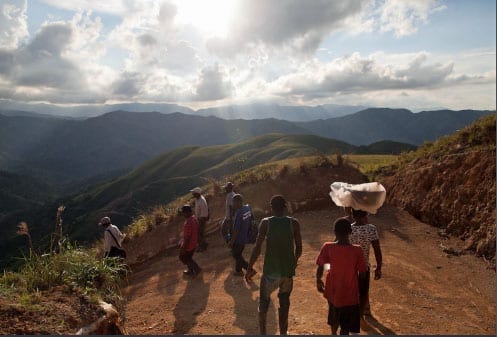
Haiti’s Mining Industry: Worker Rights in Peril
If the current political impasse in Haiti is resolved, lawmakers are likely to consider how to develop the country’s untapped gold and copper veins—and the process will determine the extent to which workers achieve their share of economic prosperity.
“Given the dearth of decent employment opportunities and pervasive extreme poverty, workers are highly susceptible to exploitation and rights violations,” according to a new report, “Human Rights and Environmental Risks of Gold Mining in Haiti.”
“Building strong labor protections into the emerging regulatory regime for mining is therefore essential to guarantee the rights of Haitian workers,” the report asserts.
Metal mining in Haiti could yield an estimated $20 billion in gold alone. Between 2006 and 2013, foreign mining companies invested some $30 million to prospect for metals in Haiti. Yet as the report notes, mining activity in Haiti will occur in an environment “already characterized by widespread rights abuses, particularly deprivations of economic and social rights and denials of the right to information and political participation.”
Workers ‘Highly Susceptible to Exploitation’
Many Haitians are unaware of the potential of gold mining, and the current government has been negotiating new mining laws behind closed doors, according to Global Risk Insights. The report asserts that the next government will face pressure to open up the country to mining to alleviate deep poverty in the hemisphere’s poorest country.
More than two-thirds of Haitian workers lack formal employment, and those who have jobs typically earn wages far below the cost of living. Given the lack of decent employment opportunities and pervasive extreme poverty, workers are highly susceptible to exploitation and rights violations.
The report cites failed examples of foreign investment in the garment sector as a warning that workers may be promised much but receive little with the development of the gold mining industry. For instance, a $300 million factory complex in the northern town of Caracol displaced families dependent upon agriculture with the promise of creating up to 65,000 low-wage jobs. More than two years later, only an estimated 5,000 jobs have been created and workers are paid less than $7 a day—an amount insufficient to adequately feed a family.
The mining sector lacks the regulation and transparency of the apparel industry and so employers have less incentive to follow sound labor practices. Further, mining tends to be concentrated in isolated regions with few formal jobs—creating more potential for abuse of worker rights.
Steps for Safeguarding Workers
To protect the rights of Haitian workers, the Solidarity Center recommends that Haitian mining law should:
- Require compliance with the national labor code.
- Adopt the protections and measures outlined in the International Labor Organization’s Safety and Health in Mines.
- Include language to establish a formal workforce, in which workers have contracts, subcontracting is discouraged and local Haitian labor is hired.
- Stipulate guidelines for profit-sharing.
The 264-page report was compiled by the Haiti Justice Initiative and the Center for Human Rights & Global Justice, a member of the Haiti Advocacy Working Group, a Solidarity Center ally. Lauren Stewart, Solidarity Center senior program officer for the Americas, contributed to the report.
